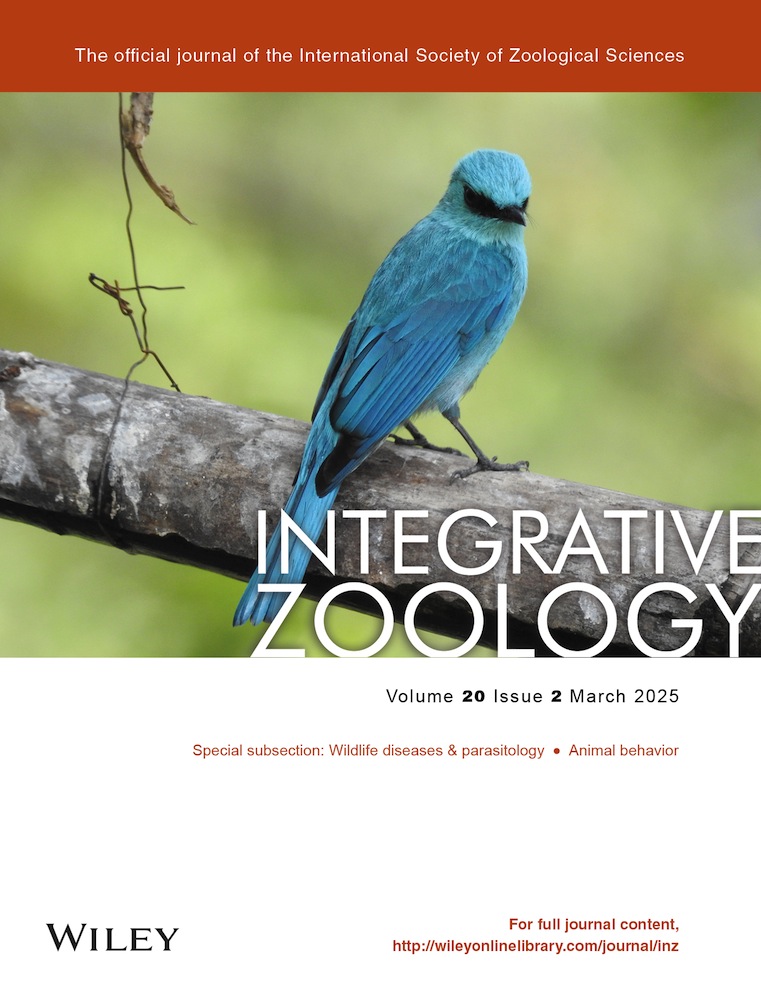Introduction to Advances in Amphibian Behavioral Ecology, Morphology, and Phylogeography
Funding: This project was funded by the Research Fund for International Scientists (RFIS) from the National Natural Science Foundation of China (NSFC; W2432021) and the Foreign Youth Talent Program of the Ministry of Science and Technology of the People's Republic of China (QN2023014004L) awarded to A.B.
The last two decades of publications in Integrative Zoology have highlighted that future climatic variations can impact amphibians through changes in vegetation cover (Escoriza and Hernandez 2022), synergies between temperatures and pathogens (Bustamante, Livo, and Carey 2010), hibernation patterns (Xie et al. 2022), and the physiological impact of salinization on the environment (Tornabene et al. 2023). The field can also be used to understand the future of amphibians under the current environmental conditions, using physiological conditions (Hastings et al. 2023) and competition between species for microhabitats (Borzée et al. 2016), and also to estimate population sizes and sex ratios (Olarte, Sánchez-Montes, and Martínez-Solano 2020; Reyne et al. 2021). Understanding population size variations in amphibians is notoriously difficult because of natural fluctuations; however, Capellà-Marzo, Sánchez-Montes, and Martínez-Solano (2020) linked population size to migration in green frogs. The fields of behavioral ecology and population ecology in amphibian research help to improve understanding of habitat preferences and population dynamics, and additional studies in these fields are greatly needed for further conservation in the face of climate and other anthropogenic changes.
From a phylogenetic and taxonomic perspective, threats vary by (sub)population, and it is therefore important to properly describe the taxonomic and phylogenetic attributes of species (Huang et al. 2016) and understand associated regional variation, for example, in behavior (Zhao et al. 2023). Understanding the phylogeographic structure of populations around landscape features, such as toads in the Aegean region (Dufresnes, Probonas, and Strachinis 2021), and the relationship between population and geological events (Othman et al. 2022), is also critical to understanding the origin of species and predict their future. For instance, species with large distributions, such as the treefrog Polypedates megacephalus, show patterns of isolation by distance (Jin et al. 2023), which likely translates to variation in ecology and threats across their range. Thus, integrating new phylogenomic tools with population-specific variables will provide a better understanding of amphibian communities, enabling the development of specific research hypotheses anchored with the most robust tools currently available.
Finally, the impact of environmental changes is highlighted by their effects on morphology. For example, species ecologies influence the inter-orbital distance in an anuran (Jiang, Chen, and Liao 2022), newts show morphological variations at the edge of their range (Sotiropoulos, Legakis, and Polymeni 2008) and toad body sizes varying with latitude because of growth rates and age (Yu and Lu 2013). However, not all environmental changes have an impact on morphology, and three species persisting despite landscape conversion did not display changes in morphology (Gangenova et al. 2020). It is still a hard task to generalize findings to a global scale, and this difficulty and the effects of age classes are highlighted by a study of the skeletochronology data (Peng, Zhang, and Lu 2022). Such studies are demanding, and the better connectivity among researchers and collaborations among researchers across the world today are strengths that will help answer questions at a broader scale and encompass all amphibians.
The contributions of amphibians to the health of the environment through their contributions to ecological services, human health, and pest control (Wren et al. 2024) highlight the need to pursue further research. In addition, data such as climatic variables can be used for projections to understand the impact of climate change, now the primary factor in amphibian declines (reviewed by Li, Cohen, and Rohr 2013). Such research is frequently synthetic and integrative, combining all of the fields of study described above. This makes Integrative Zoology an ideal place in which to publish integrated zoological and conservation research that can help to stem amphibian decline. While amphibians have been model species for science for decades, their use is not diminishing (Hitachi et al. 2009), and continued interest in anurans, caudata, and gymnophiona will help quench the thirst for knowledge and curiosity about amphibians.




